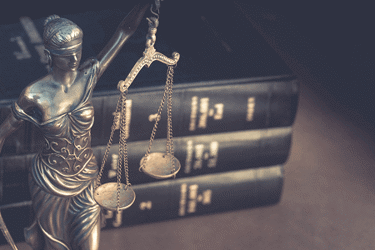The Post-Mayo World Of Life Sciences Patents
By Limin Zheng, Ph.D., GCA Law Partners LLP

To be entitled to a patent, an invention must satisfy a number of patentability requirements, including the “patent eligibility” requirement under 35 U.S.C. § 101. In this three-part series, we will look at how the U.S. Supreme Court’s jurisprudence on patent eligibility has evolved, examine the impact of its March 2012 decision in Mayo Collaborative Services v. Prometheus Labs, Inc. on life sciences patent litigation in lower courts, and discuss what it means for patent eligibility of biologic and biosimilar patents.
This first installment provides a brief introduction of the patent-eligibility requirement and the Supreme Court’s key decisions on patent eligibility concerning life sciences patents. We will then review statistics on post-Mayo patent-eligibility challenges to life sciences patents in lower courts and discuss why application of the two-step inquiry outlined in Mayo skews toward a finding of patent ineligibility.
How We Got Here
Article 1, Section 8, Clause 8 of the United States Constitution gives Congress the broad power to “ promote the progress of science and useful arts, by securing for limited times to authors and inventors the exclusive right to their respective writings and discoveries.” (Emphasis added.) Consistent with this mandate, under Section 101 of the Patent Act of 1952, “[w]hoever invents or discovers any new and useful process, machine, manufacture, or composition of matter, or any new and useful improvement thereof, may obtain a patent therefor, subject to the conditions and requirements of this title.” (Emphasis added.)
Despite the broad language, the U.S. Supreme Court has long held that Section 101 does not embrace every discovery, but implicitly excludes from patent protection the following three subject matters: (1) abstract ideas, (2) laws of nature, and (3) natural phenomena. The rationale for the exclusion is that these subject matters are the basic tools of scientific and technological work, and monopolization of these tools through the grant of a patent might tend to impede innovation more than promote it.
For life sciences patents, the Supreme Court decades ago found inventions directed to a man-made mixture of certain naturally occurring bacterial strains patent ineligible (Funk Brothers Seed Co. v. Kalo Inoculant Co., 333 U.S. 127 (Feb. 1948)), but those directed to a man-made, genetically engineered bacterium patent eligible (Diamond v. Chakrabarty, 447 U.S. 303 (June 1980)). Though both had the potential for significant utility and both involved at least some human intervention, the court found the mixed bacterial culture in Funk Brothers to be no more than a discovery of the laws of nature — that certain strains of different species of the bacteria could be mixed without inhibitory effect on each other — whereas the genetically engineered bacterium in Chakrabarty had “markedly different characteristics from any found in nature.”
Despite the long-standing judicial exceptions to patentability, until recently Funk Brothers had remained the only Supreme Court decision that found a life sciences invention patent ineligible, and Section 101 had remained an infrequently used challenge to patent validity and a low threshold to overcome, especially for life sciences patents.
That changed about five years ago, with the Supreme Court’s decision in Mayo Collaborative Services v. Prometheus Labs, Inc., 566 U.S. 66, issued March 20, 2012. In Mayo, the claims at issue were directed to a method of optimizing therapeutic efficacy of thiopurine drugs for treating autoimmune diseases by measuring the levels of certain metabolites in a patient’s blood to determine whether the amount of drug should be increased or decreased. In holding the claims patent ineligible, the Supreme Court found that the claims merely “set forth laws of nature — namely, relationships between concentrations of certain metabolites in the blood and the likelihood that a dosage of a thiopurine drug will prove ineffective or cause harm” and failed to “do significantly more than simply describe these natural relations.”
A year later, on June 13, 2013, the Supreme Court dealt another blow to the patent eligibility of life sciences inventions in Association for Molecular Pathology v. Myriad Genetics, Inc., 133 S. Ct. 2107, in which the court found claims directed to isolated DNA fragments derived from BRCA1 and BRCA2 genes patent ineligible, while those directed to cDNA fragments patent eligible. The court reasoned that the former were created by nature (notwithstanding the “isolation” by men) and the latter — at least when they are 15 nucleotides in length or longer — were “unquestionably” created by a lab technician.
The Mayo and Myriad decisions, along with the Supreme Court’s subsequent decision in Alice Corp. v. CLS Bank International, 134 S. Ct. 2347 (issued May 8, 2014, in which the court found claims directed to a computer-implemented scheme for mitigating settlement risk patent ineligible), dramatically reshaped the landscape of patent-eligible subject matters. Under a two-step framework established by the Supreme Court — first developed in Mayo and reaffirmed in Alice — courts in step one “determine whether the claims at issue are directed to one of those patent-ineligible concepts.” If so, in step two, courts embark on a “search for an inventive concept,” considering “the elements of each claim both individually and as an ordered combination” to determine whether the additional elements “transform the nature of the claim” into a patent-eligible application.
Despite the Supreme Court’s caution against an overzealous application of its ineligibility holdings, the decisions were treated by many as open season on patents that have anything to do with an abstract idea, a natural phenomenon, or a law of nature.
The Post-Mayo World Of Life Sciences Patents
Since Mayo, the U.S. Court of Appeals for the Federal Circuit has invalidated, at least in part, life sciences patents as directed to patent ineligible subject matters nine out of 10 times. Six of the nine cases concerned diagnostic patents; two concerned digital health patents; and one concerned a mammalian cloning patent describing and claiming “Dolly the Sheep.” The only case in which a life sciences invention survived the Federal Circuit’s patent-eligibility scrutiny unscathed, Rapid Litigation Management Ltd. v. CellzDirect, Inc., 827 F.3d 1042 (Fed. Cir. July 2016), concerned a laboratory technique patent directed to a method for cryogenically freezing liver cells.
In district courts, motions challenging patent eligibility of life sciences inventions have increased significantly. Of the 56 published post-Mayo rulings where the district courts made a substantive determination on patent eligibility of life sciences inventions, 36 (about 64 percent) found the challenged claims patent ineligible. The frequency of ineligibility findings of life sciences patents has remained high in 2017.
|
Year |
Total Substantive Eligibility Rulings |
Ineligible |
Eligible |
Mixed |
|---|---|---|---|---|
|
3/21/2012 – 2013 |
5 |
80% (4/5) |
20% (1/5) |
-- |
|
2014 |
8 |
75% (6/8) |
25% (2/8) |
-- |
|
2015 |
19 |
68% (13/19) |
21% (4/19) |
11% (2/19) |
|
2016 |
11 |
36% (4/11) |
55% (6/11) |
9% (1/11) |
|
2017 (as of Oct. 31) |
13 |
69% (9/13) |
23% (3/13) |
8% (1/13) |
|
Total post-Mayo |
56 |
64% (36/56) |
29% (16/56) |
7% (4/56) |
This is not surprising because for life sciences patents, analyses under the Mayo/Alice two-step framework inherently skew toward a finding of patent ineligibility. As recognized by the Supreme Court in Mayo, “all inventions at some level embody, use, reflect, rest upon, or apply laws of nature, natural phenomena, or abstract ideas.” This is especially so in the life sciences arena, where discoveries of a law of nature or a natural phenomenon often not only form the basis but also the core of the inventions. Thus, it often is easy for courts to find in step one that the claims are “directed to” such patent-ineligible discoveries.
While the Supreme Court in both Mayo and Myriad went out of its way to emphasize that “applications” of laws of nature, natural phenomena, or abstract ideas may well be deserving of patent protection, the court unfortunately provided little guidance on what is required to turn a claim from patent-ineligible discovery to patent-eligible application of the discovery. In this vacuum, the Federal Circuit declared that an application of a discovery is only patent eligible if the application itself is innovative:
The inventive concept necessary at step two of the Mayo/Alice analysis cannot be furnished by the unpatentable law of nature (or natural phenomenon or abstract idea) itself. That is, under the Mayo/Alice framework, a claim directed to a newly discovered law of nature (or natural phenomenon or abstract idea) cannot rely on the novelty of that discovery for the inventive concept necessary for patent eligibility; instead, the application must provide something inventive, beyond mere “well-understood, routine, conventional activity.”
Thus, for inventions that are applications of new and even groundbreaking discoveries using conventional techniques, step two — the search for an inventive concept — inevitably ends in a finding of patent ineligibility. Indeed, while the Supreme Court in Myriad expressly acknowledged that “[a]s the first party with knowledge of the [BRCA1 and BRCA2] sequences, Myriad was in an excellent position to claim applications of that knowledge,” Myriad’s patent claims directed to applications of that knowledge — for example, primers having portions of BRCA1 or BRCA2 sequences and methods of genetic screening using such primers — were all found to be patent ineligible by both the district court and the Federal Circuit. (Editor’s note: The author represented Myriad in these later proceedings.)
In Part 2, we will take a closer look at the life sciences patent cases where patent eligibility was at issue and discuss how different types of life sciences patents fared under the current trend.
 About the Author:
About the Author:
Limin Zheng is a partner at GCA Law Partners LLP. Her practice emphasizes patent and other complex technology litigation and spans a broad range of technologies, with a focus on biotechnology, biotherapeutics, and medical devices. She can be reached at lzheng@gcalaw.com.
